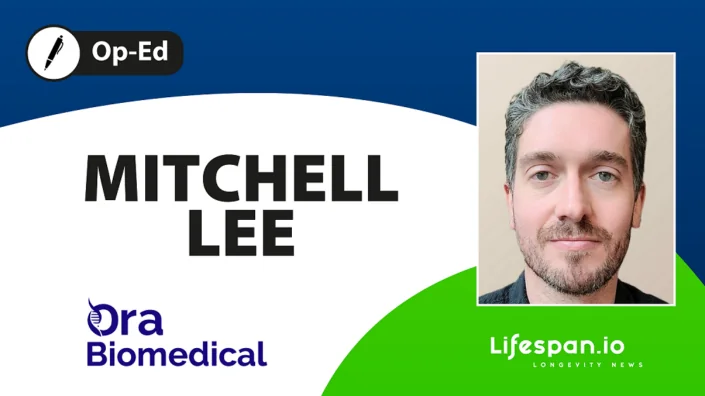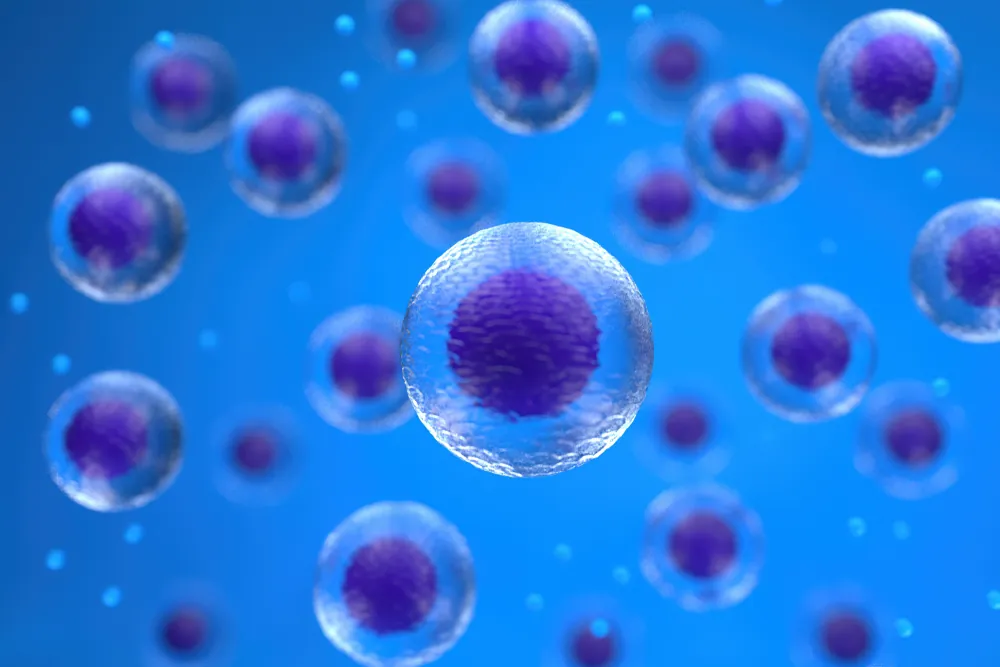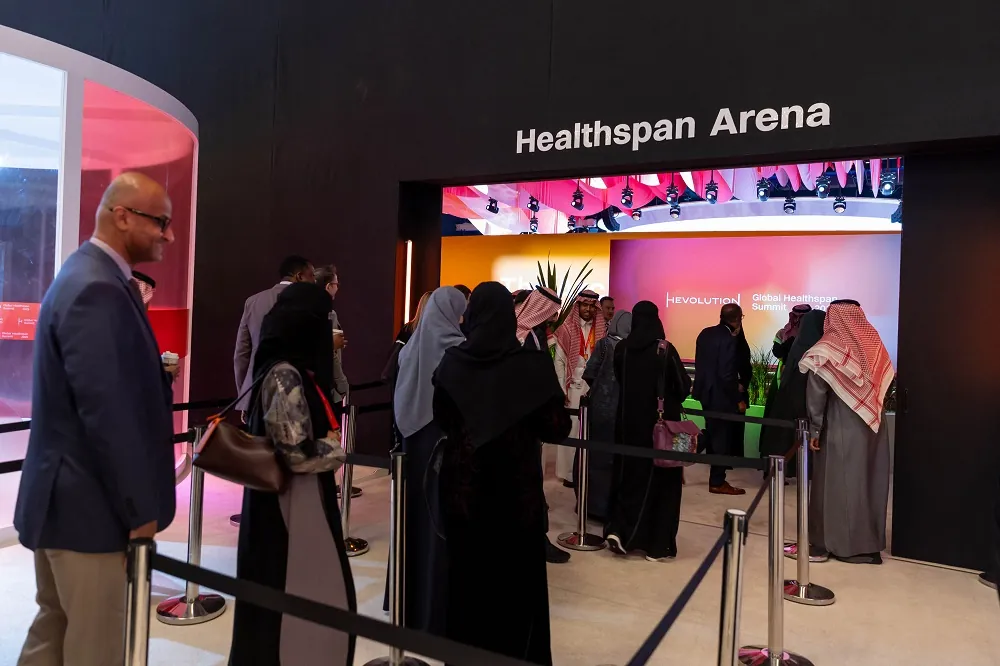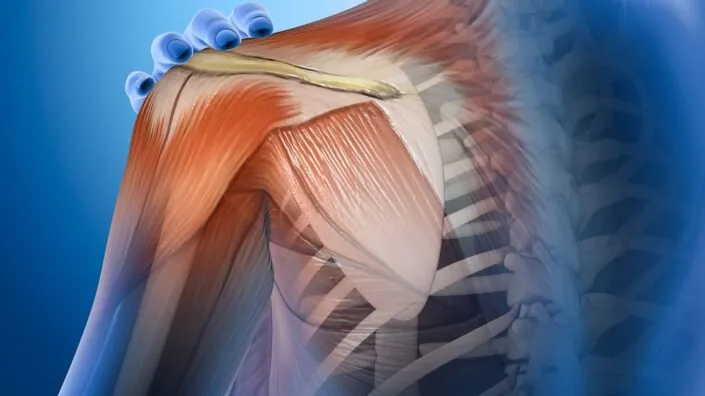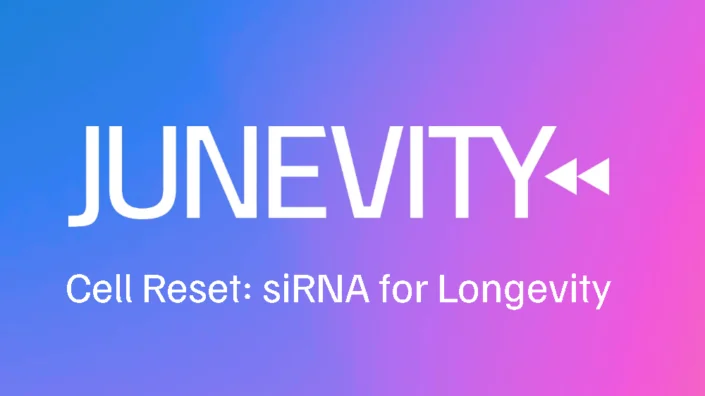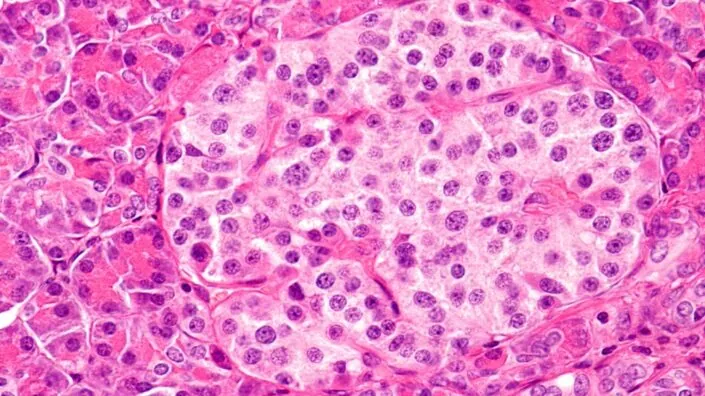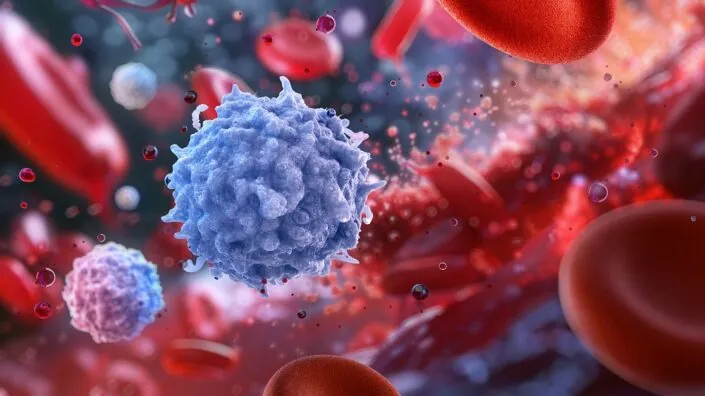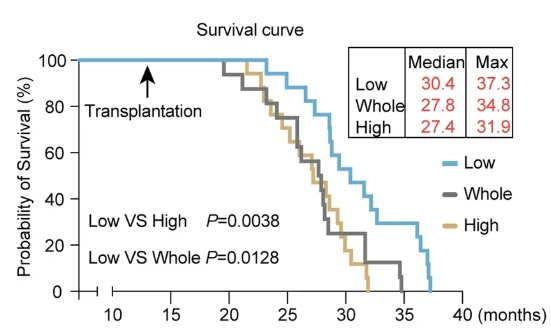Junevity Is Silencing RNA to Treat Obesity and Diabetes
Some longevity biotech companies fit neatly into one of the big buckets we have in this field, like senolytics or cellular reprogramming. Others, such as Junevity, a small spin-out from the University of California, San Francisco, dare to walk an unbeaten path. Junevity pursues the ambitious goal of fixing age-related transcriptional dysregulation using short interfering RNAs, also known as silencing RNAs (siRNAs), a powerful mechanism of regulating gene expression.
The company recently closed a $10 million funding round and is charging ahead with drug candidates against obesity and type 2 diabetes. We decided it was a good time to have a chat with Junevity’s co-founder and CSO, Dr. Janine Sengstack.
Everyone has a personal story of how they got into our field, that moment when you decide to study or even realize you’re specifically studying the biology of aging. What’s your story?
Ever since I was a little kid – since middle school, really – my goal has been to help people live longer, healthier lives. Originally, I wanted to do medicine because in middle school, a whole bunch of people important to me died of various diseases. I thought, “This is terrible, I want to go into healthcare and make a difference in people’s lives.”
As I progressed through education and started my undergrad at Cal Poly in San Luis Obispo, I realized what I’m super passionate about is doing the science behind the medicine and coming up with novel therapeutics to help people live healthier lives. That’s really where the passion for discovering new science and coming up with new ideas got fostered.
For aging biology specifically, I have a lot of great older role models in my life. I want to be like them when I grow up. Some of them include my mom’s hiking group friends who are in their 80s and still climbing mountains.
I can relate. I live in Seattle, where hiking is the favorite pastime, and those 70–80-year-olds breezing past me on trails are both inspiring and mildly annoying.
Right! They’re inspirational. My German grandma is 91 and still living by herself, super sharp, has so much energy. That inspired me to want to be like them when I grow up but also to study aging and help people live these longer, healthier lives.
I did a summer rotation with Dr. Hao Li at UCSF as part of a summer internship program. I had a phenomenal time working with him in his aging biology lab and quickly became enthralled with that science. I also really loved working with him as a mentor and the lab in general. Just a few months later, I applied for grad school thinking I would love to work in and do my PhD in Hao Li’s lab at UCSF, and that’s what I ended up doing.
We did what Hao and I called a high-risk, high-reward PhD project where we wanted to find brand new transcription factors to target to take cells from a diseased, old state and bring them back to a healthy state. We were inspired by the partial reprogramming work with the Yamanaka factors because it shows the power of targeting transcription factors to undo time in a way. That’s very powerful, but we wanted to focus on not de-differentiating cells – we want them to stay the same cell type, just bring them back to a healthier version of themselves.
I guess it all starts with the understanding that aging is a massive, very heterogeneous dysregulation of things, including transcriptional signatures. Due to the complexity of this, we probably need AI’s help, and that’s what you are using to discover those most upstream factors, correct?
Yes, that’s exactly right. We have this underlying hypothesis that in aging and in many complex diseases related to aging, transcriptional dysregulation plays a major role. There are so many changes across different pathways like inflammation, mitochondrial function.
But we don’t want to target one mutated gene, which is what a lot of traditional drug discovery does. We want to focus on the underlying gene expression changes and then, like you said, use AI and machine learning tools to predict that upstream regulator of those genes to then repress and bring cells back to a healthy state.
Are you also trying to develop a mechanistic understanding of the relationships you find?
Yes, absolutely. We think a lot about first predicting the factor, but then a very important part of our platform is the validation and follow-up analysis of each factor and what it does in the cells at a mechanistic level. Let’s say we knock down a transcription factor; what changes in the gene expression patterns downstream? We could do RNA sequencing in cells that have been treated to knock down that factor and look at specific pathways.
In our collaboration with Novo Nordisk last year, we were looking at specific readouts in metabolism. We did some exploration of metabolic rate in cells and could look at the mechanism there and see if perturbing this factor changes the energy expenditure of these cells, for example.
You have said in your presentations that one of the differences between your way of doing things and that of Yamanaka is that overexpressing transcription factors might be unsafe, in part because they bind off-target, while silencing them is safer, and that’s what you do using siRNAs, right?
Yes, that’s right: overexpressing transcription factors has more inherent risk because if you’re adding more to a system, they can bind to the wrong things. It’s also harder to dose therapeutically. In our case, we’re focused on siRNA for downregulation of transcription factors – that is safer from a cell biology perspective but also a well-established modality now. I would not have said that ten years ago. We are fortunate that the timing is perfect for us to go after using siRNA.
How does RNA silencing work?
SiRNAs are about 20 base pairs long, double-stranded RNA molecules. Other scientists in the last 20 years or so have figured out a lot of the really challenging biology and therapeutics development of siRNA, so we are thankful for how much work has gone into developing this modality. That involves backbone chemistry modifications to the siRNA so that it avoids nucleases and doesn’t get degraded.
Right, you basically use various tricks to reinforce those RNAs to make them longer-lived.
Yes, exactly, and you can do specific tissue targeting, which is important for a small molecule that can go anywhere. The most well-established way to do that is with what’s called a GalNAc conjugation: a sugar-amino type of attachment. That makes it only go to hepatocytes, so it’s super specific to liver targeting. We’re starting with that because it’s very established and very safe.
The beauty of siRNA is: repression is safer, you can do very specific targeting, and the effects are very durable. Sometimes, you can have duration up to six months. This ability to have long-lasting effects is impressive because that helps patient compliance. You don’t have to take a pill every single day, you might just get an injection every six months.
Yes, we usually think about RNA as something easily degradable, but siRNAs bind to a protein complex called RISC, and in this form, they can persist for weeks and months.
Yes, they just sit there, attacking and degrading those target mRNAs, correct.
I understand that methylation clocks didn’t show rejuvenation in the skin cells that you worked on during your PhD.
We’re not working with methylation clocks in our current research, but it’s correct: in those fibroblasts, we saw rejuvenation, but the methylation clocks didn’t show it. My speculation would be that we pushed them back towards something like a middle-passage state and not a stem cell state, but I didn’t look into it super deeply. It was more like a supplemental figure.
This caught my attention because even partial reprogramming with Yamanaka factors causes epigenetic rejuvenation.
Yes, that’s interesting. Again, my guess would be that it’s because our technology doesn’t move cells towards a stem-like cell state but rather makes them a younger, healthier version of themselves. It’s just a different mechanism of rejuvenation.
So, you started with fibroblasts, and you were able to essentially rejuvenate them. After something like that, how do you move towards more concrete indications where you want to spin out and become a company?
That is something we thought very deeply about for a long time. My PhD work developing the RESET platform proved that we can use computational and experimental methods to take cells from an older state and bring them back to a younger state by targeting different transcription factors. We used that underlying proof point to then further develop the RESET platform at Junevity to focus on targeting specific diseases related to healthspan and lifespan.
We want to help people live longer, healthier lives, but we don’t want to do a 30-year clinical trial and see if they live longer. We need to be more focused on very practical, measurable, established clinical endpoints as a company. We think that’s the most likely way to get approvals, move things forward, and make a big impact.
That’s why we focused our platform on specific indications that are deeply related to aging. If you have type 2 diabetes, your lifespan tends to be shorter, and your healthspan is certainly shorter. Obesity, too. We’re considering other indications like osteoarthritis – clearly aging-related, healthspan-related, but having a distinct clinical endpoint is still a key part of that.
Currently, your two main indications are obesity and type 2 diabetes, right? Can you tell me a little bit about how your candidates actually work on them?
I can tell you some things, but not too many. We identified our target transcription factors by looking at very large-scale human datasets of people with diabetes and obesity – over 500 patients – and looking at their transcriptomics data in the liver, at the underlying gene expression changes, and then what transcription factor is likely regulating those things.
Having identified our factor, we could create an siRNA for it. We’re very excited about it because we do see significant improvements in insulin sensitivity, which is a really big deal in the diabetes field. A lot of patients are taking several drugs – there’s a lot of amazing improvements in the space, but they still need many different drugs and have complicated dosing regimens.
Some drugs, like pioglitazone, do work for insulin sensitivity but have a negative side effect of weight gain. If you have type 2 diabetes, you really don’t want to gain more weight. We’re very excited that we have similar insulin sensitivity improvement as pioglitazone but without the weight gain.
You have very promising results from your preclinical studies for obesity, right?
Yes. The obesity space has grown dramatically with the advent of GLP-1 receptor agonists. Those drugs are very successful, and it shows that the market is huge. Many public company CEOs have been saying they don’t think this is the top of the obesity market – it’s just getting started, and there’s going to be a lot of next iterations and learnings on new approaches.
A downside of the current drugs is muscle loss because they function as a caloric restriction model. You basically just don’t eat, and you lose fat, which is great, but you also lose muscle, which is less great, especially in older patients where muscle retention really matters.
We’re excited because our candidate leads to fat loss but no muscle loss, and only a little bit reduced caloric intake. Those things together are very promising from a monotherapy direction but also as a combinatorial therapy possibility in the obesity space.
Today, longevity companies have no choice but to work with particular indications instead of targeting aging itself. Do you envision a better paradigm for aging research in the future?
I would love to do more preventative medicine as a general goal for the world. That would be phenomenal. To some degree, the GLP-1 class of drugs is doing that by helping pre-diabetics stop from becoming diabetics. So, there’s some of that happening.
I imagine that the future will involve multiple different drugs for different aspects of what’s going wrong in a person as they age. You might have one that helps with your knee cartilage, one that helps with your liver if you have pre-diabetes. Something that helps slow heart aging and something that helps slow brain aging. It’s unlikely we’ll have one drug to solve all the different problems, but I imagine there will be layers of different tissue- and cell-specific therapies that can help us across many different parts of aging biology.
A lot of this age-related dysregulation, including in transcriptional pathways, is adaptive. Basically, there’s damage and there is a compensatory reaction to it, and we do not want to hit those adaptive pathways. Is this a concern for you?
We definitely think a lot about if something is protective or maladaptive. We were literally just talking about this a few days ago at our company. Something like cell division, when you need to repair a tissue: in the short term, it’s a good idea to divide and fill up the space, but then prolonged cell division is a bad idea because then you can get cancer. There’s a temporal balance where short-term activation of something is beneficial, but long-term activation is actually bad.
You’re right – in some cases, for instance, a DNA damage repair enzyme gets upregulated as you age because you have more DNA damage to fix. We try our best to be as thorough as we can in the computational selection process, but then, of course, we do many experiments in cells and animal models to answer precisely this question: “Does repressing this factor reset the cells back to a healthy state, or was it actually something protective?”
I understand you jumped into the world of biotech straight from your graduation. What was it like?
Some four years into my PhD, Professor Hao and I realized that the science was going great, and we wanted to move it towards patients as fast as we could. I thought about that a lot and realized that if it stays in academia, it might take too long to move towards a therapeutic. It’s something that’s very near and dear to my heart.
Hao and I talked about it and decided we wanted to spin it out and create a company. I have great friends and mentors in the biotech and tech space – my husband was a founder, two of my best friends are CEOs of tech companies and biotech companies. So, I have a great network of other founders that gave me advice and helped me.
During grad school, I did a six-month program called Nucleate, which was incredibly helpful. It taught grad students what starting a company would look like: offering workshops, connecting us with founders, and giving us practice pitching and fundraising. Through that process, I went from “Do I want to start a company?” to “I definitely want to start a company.”
I really wanted co-founders because flying solo would be very difficult. I’m thrilled to have my co-founders Rob Cahill and John Hoekman. Rob has great business experience, has started his own tech company, got it acquired, ran a hundred-person team at a public company. During that time, he also shifted to studying aging biology and became super passionate about it, got a bioinformatics degree and was really wanting to start a longevity company. We met at the perfect time.
Then John, he took his PhD work from an idea all the way through FDA approval, went public, and raised several hundred million dollars. He’s one of the only people I’ve ever met that actually took PhD work all the way to FDA approval.
Still, you’re a pretty small company at this point. The funding you have received gives you some runway, but I can’t help but wonder how it feels to be a small longevity biotech startup. A bit scary, maybe?
I’m having so much fun. It is just the best. Not scary at all. I get great joy from the people that I work with and the science that we’re tackling. It’s challenging, of course, but that’s part of the fun – we really care about solving these difficult questions. I just get happy when I go to work every day.
What is your impression of the longevity biotech space in the last couple of years, how would you describe the climate?
I would say there is more enthusiasm around longevity science over the past couple of years, which is great. It’s been building through a variety of successes along the way – partial reprogramming, parabiosis, some of the small molecules that have shown lifespan extension in animal models. Those things happening give more credibility and believability to the notion that we can affect healthspan and lifespan, that you don’t have to start suffering as you age; there are ways to make things better.
Our approach, and what some other companies are also doing, is less like “we’re going to make everyone live forever” and more “here are some specific things that big pharma is used to seeing”: clear endpoints of specific indications that will make people live healthier lives. That makes it more digestible and approachable from a traditional biotech background.
How do we even define a longevity company? Sometimes, it feels like people simply either want to designate themselves as such or they don’t. For instance, Altos Labs is fighting this label tooth and nail, although many would say it’s clearly a longevity company.
I guess it would be the underlying mission: that our long-term goals are really to help people live healthier, longer lives. We’re approaching it from a specific indication angle, because that’s the most practical way to move forward in the near-ish term, but our mission in terms of selecting indications, in terms of how we approach our science, always comes back to “Will treating this help people have a healthier lifespan and healthspan?”
It actually feeds well into the notion that it’s more about ideology than technology. If you think of yourself as a longevity company, you probably are one.
Yes, something like that.
Do you have any other indications in mind?
We think our technology has great potential across many aging-related indications. Something in the neuro space would be very exciting to tackle, or in muscle wasting or bone health. They’re all critical things that deteriorate with age and have specific indications associated with them. They also have transcriptional dysregulation as an underlying core reason that we think our approach could be well applied to.





